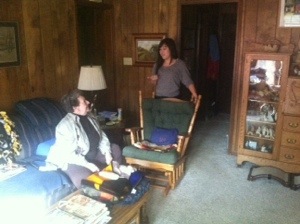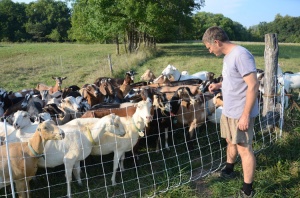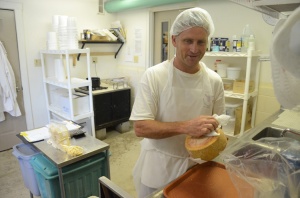*Tear* *Tear*
As the leaves fall off the tree and I make my last trek to the equipment check out window in Walter Williams Hall, I know that the time has come. My time in Multimedia Journalism has come to an end, and it’s sad.
But before we get to the tear-fest, let’s talk final project because IT’S DONE! You heard me! Our final project is D-O-N-E DONE! It’s been a hectic, stressful, but overall fantastic few weeks working on this project. I am so glad that my groupmates and I found ourselves doing a project on veterans. No matter your feelings on war and American foreign policy, you have to be impressed with the sacrifice of the men and women who choose to serve our country. The stories they have to tell are not only incredibly important for people to be made aware of, they’re also mind-boggling interesting. Whenever I work on stories involving veterans and military personnel, it is always a struggle to cut out anything that these people say in order to produce my final content (see last week’s post for more on that).
And the veterans I worked with on this project were fantastic. Major Bruce Schlager was incredibly kind and helpful to me as he discussed his 32 year military career and the impending military career of his daughter. 2nd Lt. April Miller trekked out to Mark Twain Hall in full uniform and provided great insight on what it’s like to be a woman in the military today and how far we still have to go. And I can’t say enough about Col. Bill Boston. He not only came out to Mark Twain twice for interviews, but he and his fantastic wife, Ro (who also came out to Mark Twain to be interviewed), scanned and sent me over a dozen family photos that I was able to use to help tell their story. I knew not one of these people a few weeks ago and I am so glad that I got to meet them and tell their stories.
Which moves us into the meat of our final project: the content. After debating numerous times on how we would organize the content we had produced for our website, we settled on what I feel was a great, simple solution. Our site (jillianideutsch.wix.com/seeingservice) has but five sections. The first is a home page with one of my favorite photos I took throughout this process along with an excellent introductory paragraph written by Jill Deutsch. Our next section is “Veterans.” This is where we get to tell the stories of the great veterans we met in this process. I produced a long video piece on Col. Boston and his wife Ro along with an audio piece on Maj. Schlager discussing his daughter. Jill used the interview I did with Lt. Miller to produce an audio piece where she discusses her experiences as a woman in the military. These pieces compliment a great story written by Jill that ties all of our veterans and their experiences together. Our third section is titled “Students.” This page is built around a photo gallery of an MU ROTC PT test that Jill got up before 5:00 AM to shoot. And she got some amazing photos to boot! This page also has a audio piece about Staff Sgt. Patrick Dent, a 27-year-old MU student who served in the Air Force before coming to campus. Carolin Lehman interviewed him and got him to talk about some of the difficulties young veterans face when they return home and go to get an education. Our final content-based section is titled “Recognition.” Here, we focused on how MU and the Columbia community recognize and commemorate the service of our veterans. For this page, I produced a video from footage taken at the Veterans Day Wreath Laying Ceremony at Memorial Tower. I spent an entire Saturday working on this video and I think it’s one of the best pieces I did for this class. The page also has a video produced by Carolin about Memorial Union and the poem, written by MU football star “Peaches” Graham in the early 1900s in support of building Memorial Tower. Our final page is “About Us” and has three lovely pictures and descriptions of the journalists who spent the past few weeks piecing this all together.
Now back to the tear-fest. As I’ve written before, I always saw myself as a writer. In high school, anything that smelled of multimedia I passed off to someone else. I was a journalist and journalists write so that’s what I was going to do. And then I got to this class and my whole journalistic perspective changed. I realized the freedom that multimedia offered in storytelling. I realized the doors it opened to tell better and more engaging stories that deserved to be told. I also realized that I didn’t completely suck at it, which was a welcome surprise. Throughout the semester, I found myself becoming more and more enamored with multimedia to the point that I’ve changed my interest area and am exploring the world of convergence. I’ve learned a lot in my classes here at MU but this may have been the class where I learned and gained the most. I came into this semester with next-to-nothing in terms of knowledge about any type of journalism outside of the written word. When I go home to Minnesota for winter break in a few weeks, it will be as a totally new journalist with a new set of skills and, more importantly, a new outlook on what journalism can and should be.
I’ve always thought that good stories are the hallmark of good journalism and that good storytellers are good journalists. Because of this class, I am confident that I have become and will continue to become a better storyteller with a whole new array of skills to use as I try to figure out what kind of journalist I’m going to end up as.
To my instructor, Shane Epping, I want to thank you for instilling in us the importance of storytelling and giving us the tools to tell our own stories.
It’s been a blast. Have a happy holidays, friends.





